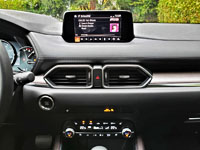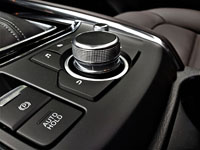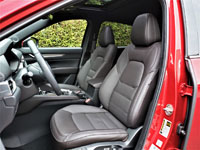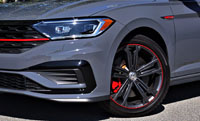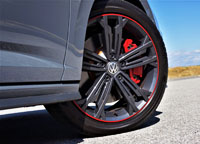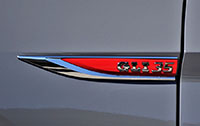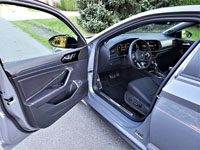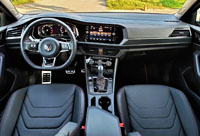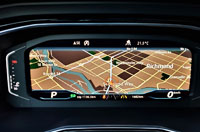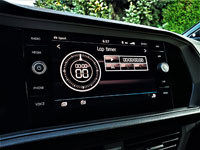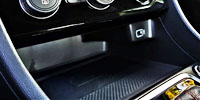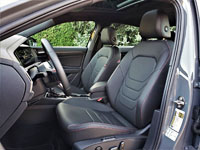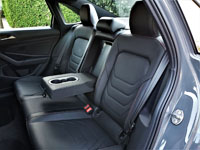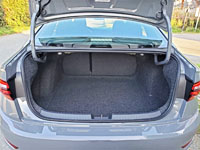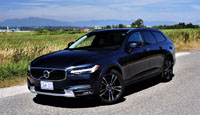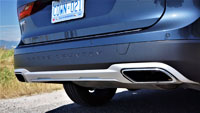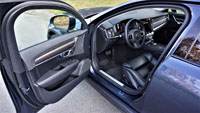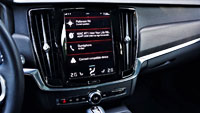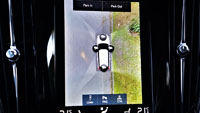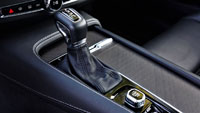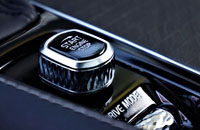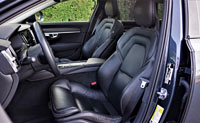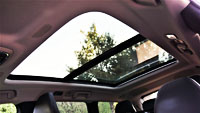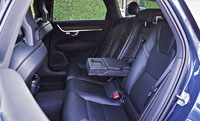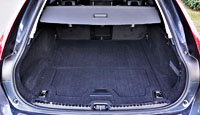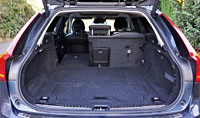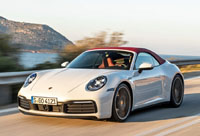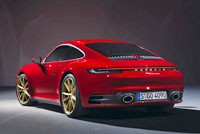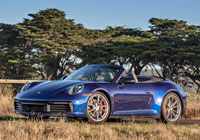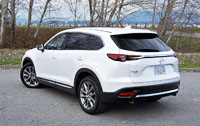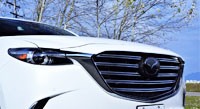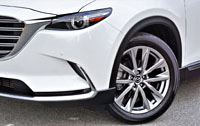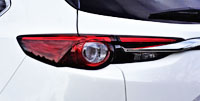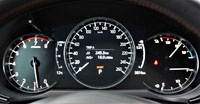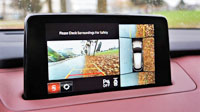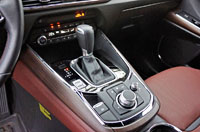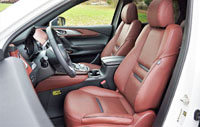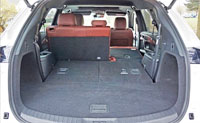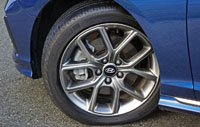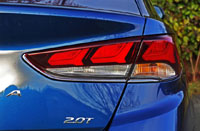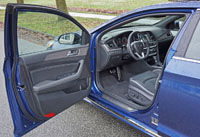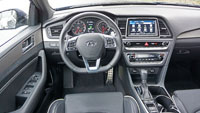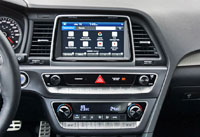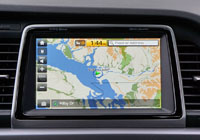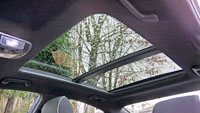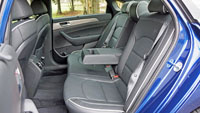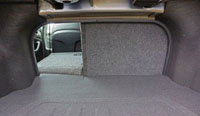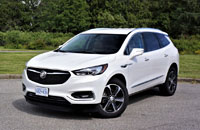
As the years start to stack up and there’s more of them behind you than ahead, to hear you’re aging gracefully is quite the compliment. Such could be said of Buick’s current Enclave, a three-row crossover SUV that’s now been with us in its current second-generation form for four years. Certainly, that’s not long by human standards, but it’s a full product cycle in automotive years, albeit not compared to the first-generation Enclave that, despite a mid-cycle refresh in 2013, lasted for an entire decade.
The SUV being reviewed here was as up-to-date as possible when being tested, but as it happens, 2021 is the Enclave’s last model year before getting a fairly comprehensive makeover. Its underpinnings will remain the same, but its styling will look a lot fresher, and not unlike the much sleeker and more modern looking second-gen Chinese-market version that’s been available since last year.
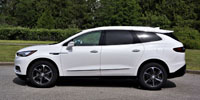
Sure, you can wait for a 2022, which actually gets reduced by $300 at the base level, but there’s opportunity to take advantage of end-of-lifecycle savings if you choose a 2021 over the new 2022 model, so as long as you don’t need to have the latest and greatest styling, the outgoing Enclave is still one very attractive family hauler. It’s also a very affordable one, at least when comparing it to longstanding luxury brands that it more or less competes against. To be clear, three-row SUV buyers won’t likely be shopping the Enclave against BMW’s X7 or Mercedes’ GLS, simply because their price points are nowhere near each other.

A base Enclave Essence starts at $48,398, or $51,398 with as-tested all-wheel drive. That’s similar pricing to fully loaded alternatives from Honda, Hyundai, Kia or Toyota, which arguably offer more features (and sometimes more luxury) for the money, but none of these rise up to $70k, which is possible when adding all the options to the Enclave Avenir. That’s around where a base Audi Q7 starts, and plenty of other premium-branded three-row SUVs, although an equivalent entry-level GLS will set you back an astonishing $101,900, just a bit less than what you’ll need to pay for the least expensive X7, which starts at $102,900.

This in mind, Buick, and its Enclave fall into the entry-level luxury sector, along with competitors like the $48,995 Infiniti QX60, $56,405 Acura MDX, and possibly the $59,700 three-row Lexus RX 350 L (which is only meant for small kids in the third row), although if we’re moving all the way up to the $60k starting point, we should probably include GM’s own Cadillac XT6 that rides on the same stretched C1XX platform (more or less) as the Enclave (and the Chevy Traverse, GMC Acadia), yet starts at $57,998. Everything else in this class retails over the $60,000 threshold, and while that’s about where the aforementioned Enclave Avenir can be had ($62,298), this Enclave Essence is the model Buick gave me to test, and therefore targets a different entry-level luxury client.
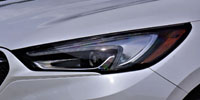
I don’t know if that last exercise was done more for my own clarification of where Buick fits into the scheme of luxury things, or as a way for you to come to grips with the same, but in any case, it’s good to understand that Buick fills an important niche in the middle of the automotive class hierarchy, and its relatively strong sales more or less prove that reality.
Despite only offering five models (the 2020 Regal Sportback of which has already been sent off to that great four-door sedan graveyard in the sky—it’s a five-door really, as its trunk is actually a hatch), Buick managed to rank sixth amongst premium brands in Canada thanks to 15,957 units being sold last year, which puts it only 755 sales behind Acura, plus more than twice as much as Lincoln (7,155) and almost three times as many deliveries as Infiniti after a particularly gutting year. What’s more, as of Q2 2021’s close, Buick’s 8,277 delivery total had already blasted past Acura’s rather sluggish 7,465 tally, although Cadillac’s XT6 appears to be on a roll with 8,402 examples out the door, so therefore Buick maintains its sixth position.
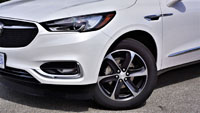
The Enclave wasn’t quite as strong in its mid-size three-row luxury SUV category last year as the Buick brand, but amongst dedicated premium three-row family haulers it ranked seventh out of 11 competitors with 1,773 deliveries (I’m not including Bentley’s Bentayga on this list for obvious reasons). This said, so far this year it’s doing a bit better with 1,270 units down the road already, placing it ahead of Mercedes’ GLS (1,148), Lincoln’s Aviator (926), and Infiniti’s QX60 (687) that’s getting an even more dramatic redesign for 2022.

Cadillac’s XT6 (973) lagged a bit behind the Enclave over the first six months of this year, as did BMW’s X7 (522), Lexus’ GX (161), and Land Rover’s Discovery (103), which seems to be getting killed by the new Defender (1,057). Tally all this up and it’s easy to understand why the Buick brand and this Enclave model are so important to General Motors (a total of 3,264 combined Enclave and XT6 sales puts GM close to Acura’s MDX), but after factoring in their even greater strength in the U.S. and yet stronger presence in China, this information might also help build confidence that Buick isn’t about to leave our market anytime soon—unfortunately I can’t confirm that for Infiniti.

The upcoming 2022 Enclave refresh should further improve the model’s sales when it arrives later this year, as long as Buick doesn’t dump any leftover 2021s on the market before the new one gets here. The fact Buick is only offering customers up to $1,000 in additional incentives is a good sign they have inventories in check, but stay tuned to CarCostCanada for any further discount info. Also, take note that CarCostCanada members who purchased a new 2021 Enclave saved an average of $2,625 thanks to knowing the SUV’s dealer invoice price before negotiating their best deal, which means it’s a good idea to find out how their very affordable membership works, and how easy it is to use from anywhere via their free app that can be downloaded from the Apple Store or Google Play Store.
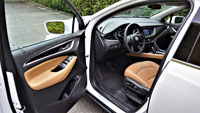
As for the 2021 Enclave Essence being reviewed here, my tester was not only upgraded with AWD, but also received a stylish $1,495 Sport Touring upgrade package that includes a sporty black mesh grille, glossed-black Pitch Dark Night lower accent trim, and 20-inch alloys instead of the standard 18s. This gets added to a base model that also features automatic on/off LED headlamps and heated power-folding exterior mirrors, on the outside, plus proximity access to get you inside.

Once seated, pushbutton ignition gets the engine going, while additional standard features include an auto-dimming centre mirror, a 4.2-inch colour multi-information display within the gauge cluster, an 8.0-inch touchscreen at dash-central, integrating Android Auto and Apple CarPlay, a 10-speaker Bose audio system, a 4G LTE Wi-Fi hotspot, a universal garage door opener, a powered tilt and telescopic steering column, a heated leather-wrapped steering wheel, a Safety Alert driver’s seat that uses vibrations to warn, perforated leather seat upholstery, three-way heatable and ventilated powered front seats with four-way lumbar support, two-position driver memory, three-zone auto HVAC with a set of rear controls, heatable second-row captain’s chairs resulting in seven-passenger capability (a bench for the second row resulting in a total of eight occupants is available), a power-folding 60/40-split third row, a hands-free powered liftgate, a 120-volt power outlet, remote start, etcetera.

All Enclaves include the Buick Driver Confidence Plus package of advanced driver assistance and safety technologies as standard too, which includes a Following Distance Indicator, Forward Collision Alert, and Rear Cross Traffic Alert with Automatic Emergency Braking and Front Pedestrian Braking, as well as Lane Departure Warning with Lane Keep Assist, Side Blind Zone Alert with Lane Change Alert, front and rear Park Assist, and IntelliBeam auto high beam assist headlights.
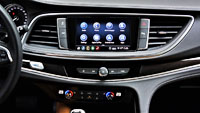
Believe me, I never once felt like I was slumming it in this Buick, even in its base trim. Actually, standard features like cloth-wrapped A, B and C pillars gave it a true premium feel, as did better-than-average soft composite materials on top of the dash and atop the front and rear side window sills. It’s also impressive across the front of the instrument panel, and the lower section of that IP ahead of the front passenger, which extends below the infotainment touchscreen and along the right side of the lower console. Buick made a point of stitching nicely padded leatherette on the sides of that centre stack and lower console, the left side of which is padded further to protect the driver’s inner knee from chafing, while this pampering surface treatment extends down to the armrest as well. These areas were done out in a particularly attractive caramel brown in my tester, perfectly matching the seats and door inserts that were also stitched, the former also featuring perforated leather inserts.

Additionally, the seat surface leather is suppler than some others at the Enclave Essence’s price point too, plus those aforementioned heated front cushions warm up to near therapeutic levels. Warmth in mind, the climate control interface, while appearing a bit rudimentary, did its job well, and while it could be a bit more upscale to look at my eyes were more easily pulled toward the centre display overtop, which has to be one of the simplest to use in the segment.
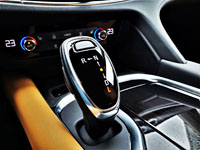
I generally like General Motors’ infotainment systems, and while I appreciate Chevrolet’s more colourful Apple-inspired interface even more than this classier design from Buick, they both work identically and utilize a full colour palette for graphically stimulating controls. I found this latest version responded to inputs quickly, which was particularly notable when jiggling the navigation map around with my fingertips. I should also note that GM’s navigation/GPS system has never once led me astray either, so a big hand to the automaker’s tech department that does infotainment very well. Important also, the rearview camera was clear and its moving guidelines useful, while the standard Bose audio system was very good.

As for the Enclave’s primary gauge cluster, it’s not very enticing. The chrome trimmed analogue dials are ok, these placed bookending another set of chrome-edged gas and engine temp meters above, but the tiny square multi-information display kind of looks like an aftermarket add-on. This comes at a time that competitors are arriving with fully digital clusters that show virtual gauges one minute and giant maps the next. Some brands are even including rear-facing camera monitors in their clusters, so Buick needs to up the ante in this respect. Fortunately, even this base Enclave’s steering wheel is excellent, with high-quality leather and an impressively sporty feel, while the spokes’ switchgear well-made and works as it should.
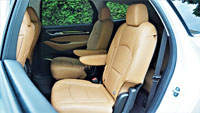
Looking up to the overhead console could be summed up as a trip back to yesteryear too, although it’s functional and happily includes a sunglasses holder, as well as LED reading lights and switches for the universal remote, OnStar, SOS, plus more. You won’t find a power sunroof button, as this base trim doesn’t include a sunroof, and I have to say it’s weird not seeing a sunroof in a roof this large.
Nevertheless, I found it easy to find an ideal driving position thanks to a manual tilt and telescopic steering wheel with loads of rearward reach, while the seats were comfortable, although without much lateral support, therefore if you’re looking to use this Enclave to snake through fast-paced corners, you’ll probably want to find something other than the steering wheel to hold on to. This is only worth mentioning because the Enclave handles well, partially due to the 20-inch wheel and 255/55 tire upgrade noted earlier, so it might be a good idea for performance fans to look upstream to a fancier trim line in order to find more aggressive seat bolstering.

Similarly, the Enclave Essence model’s second-row captain’s chair backrests are almost totally flat, although rear passengers can fold down their individual centre armrests to hang on. The second-row seats are mostly comfortable, however, with good legroom when slid all the way rearward. Those in the second row will also appreciate the previously mentioned rear climate control panel on the backside of the front console, which includes seat warming switchgear. This is where you can also find a set of USB chargers, but oddly no air vents. Don’t worry, though, as these are intelligently integrated within the roof, as are another set of vents for third-row passengers, and likewise for the LED reading lamps.

It’s easy to flip the second-row seats up and out of the way for getting into the very back, only necessitating a mild pull on a handle atop the backrest, while another lever below flips them down for storage. Before getting into cargo capacity, rear occupants enjoy separate USB charging ports, not to mention fairly large rear quarter windows for good outward visibility. I found the third-row seats comfortable too, not to mention reasonably roomy. Buick left good space for legs and feet, especially when the second-row seats are pulled slightly forward.
As for cargo, they fold down relatively flat, as does the second row, providing more storage capacity than most of their peers. In fact, I was able to load up a double-wide Ikea Pax wardrobe inside, including its rather bulky glass sliding door system, with room left over. By the numbers, the Enclave can manage up to 2,764 litres of what-have-you behind the front seats, 1,642 litres aft of the second row, and 668 litres in back of the third row.

Even when loaded up with gear the Enclave was no slouch off the line, its 3.6-litre V6 making a healthy 310 horsepower and 266 lb-ft of torque for plenty of straight-line performance. It’s conjoined to a nine-speed autobox that not only aids fuel economy with a fairly good rating of 13.0 L/100km city, 9.1 highway and 11.2 combined with FWD, or a respective 13.6, 9.6 and 11.8 in as-tested AWD, partially thanks to standard idle start/stop technology, but it also provides wonderfully smooth shift up and down the range.
Then again, engaging manual mode and its steering wheel-mounted paddles transform this calm, sedate traveler into a much sportier canyon carver, or at least it was much more enjoyable than I initially expected. BMW doesn’t even go so far as to hold the X5 or X7 engine’s redlines before upshifting, so a big hand for Buick’s engineers that give the Enclave such strong performance. The V6 also makes a nice growl at full throttle, although I wouldn’t take that to mean it’ll outshine those BMWs as far as engine auditory tracks go.
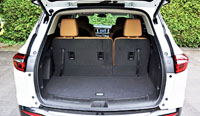
I think ride quality will matter more to most Buick buyers than all-out performance, however, and to that end the Enclave’s driver and many passengers will be nicely isolated from exterior elements no matter the speeds being traveled or environment outside. Although I found there was more wind buffeting on the highway than expected. It wasn’t the side windows (I checked), but it may be something specific to my test model’s door seals. Buick prides itself in providing near tomblike silent interiors, so it could also be possible that more of Buick’s “Quiet Tuning” technologies get added to upper trims. Either way, make sure you look for this on your test drive.
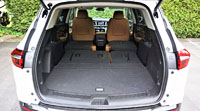
Even if the Enclave Essence is a bit noisier at highway speeds than it should be, it’s hard to argue against its sub-$50k price point. That it competes so well against others that cost thousands more should be taken into consideration, but then again it also gets out-muscled for features and refinement by some newcomers in the volume-branded mainstream category. This is a very competitive market segment, and the upcoming 2022 Enclave should address some of my minor complaints.
On that note, I don’t think any of my grumblings should put you off testing a 2021 Enclave, and at least comparing it to its rivals, especially when factoring in Buick’s enviably high ranking in J.D. Power and Associates’ 2021 Vehicle Dependability Study, where it sits fifth overall and just third amongst luxury brands.
Review and photos by Trevor Hofmann


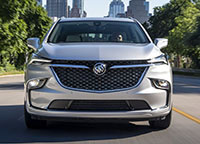
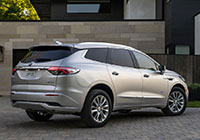
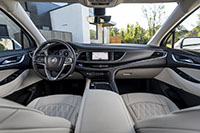
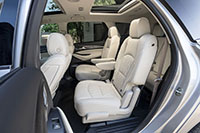
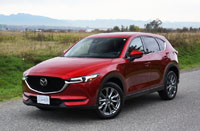


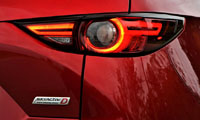
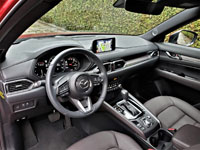
 To this end, the SkyActiv-D turbo-diesel suits an upwardly mobile brand like Mazda better than some others, being that diesels have long been the stuff of Mercedes-Benz, Audi, and BMW, plus more recently Jaguar and Land Rover. I’d be remiss not to mention Volkswagen again, because not too long ago oil burners made up more than half of their Canadian sales, but now all of the just-noted German brands are on a different trajectory, embracing plug-in electric mobility at a much greater development cost and no sure promise of profits (even mighty Tesla had never managed more than two sequential quarters of profits as of this review’s publication date).
To this end, the SkyActiv-D turbo-diesel suits an upwardly mobile brand like Mazda better than some others, being that diesels have long been the stuff of Mercedes-Benz, Audi, and BMW, plus more recently Jaguar and Land Rover. I’d be remiss not to mention Volkswagen again, because not too long ago oil burners made up more than half of their Canadian sales, but now all of the just-noted German brands are on a different trajectory, embracing plug-in electric mobility at a much greater development cost and no sure promise of profits (even mighty Tesla had never managed more than two sequential quarters of profits as of this review’s publication date).